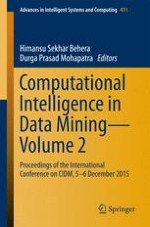The book is a collection of high-quality peer-reviewed research papers presented in the Second International Conference on Computational Intelligence in Data Mining (ICCIDM 2015) held at Bhubaneswar, Odisha, India during 5 – 6 December 2015. The two-volume Proceedings address the difficulties and challenges for the seamless integration of two core disciplines of computer science, i.e., computational intelligence and data mining. The book addresses different methods and techniques of integration for enhancing the overall goal of data mining. The book helps to disseminate the knowledge about some innovative, active research directions in the field of data mining, machine and computational intelligence, along with some current issues and applications of related topics.
